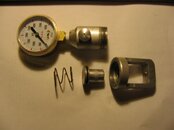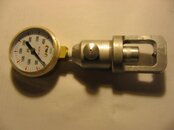Thanks guys for sharing the moment with me.
Couple of things...
The mouthpiece & hoses, what's a good way to really clean those out. These
seem very clean... but now a days, there's just a lot more funk out there to avoid.
VDH... most of those folks seem to have their own little party going on, and the nicer people, Luis, seem to be over here too. After having several threads hijacked and even getting one locked???, I'm not too sure about them, and don't know about just mailing off my new score to a total stranger.
I have zerro double hose experience, so I wouldn't mind a few things to be aware of and/or better idead about upgrades that need to be made. The ones above were a little over my head.
What's a duck bill? mouthpiece valve?
anyway, very excited for a saturday expidition to the depths and extents of my neighbors pool.
anything else you want to throw at me to get me off on the right track would be appreciated

after 27 years of diving, I'm getting more vintage by the day. Must be mid-life on the horizion.








